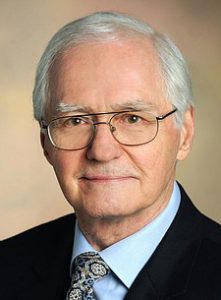Remember Tiananmen Square? I was reminded of those halcyon and tragic days last week when I ran across an article in the New York Review of Books from May 20, 2014.
It marked the 25th anniversary of that fervent outbreak of longing for freedom and equality led by Chinese students in the capital of Beijing. The incident began peacefully enough on April 15, 1989, and lasted until it was violently terminated June 4 by the army of the People’s Republic of China.

Richard Conville
International media were there. Reporters were there, describing the scene and interviewing participants. We heard their authentic pleas for freedom. I recall two images in particular. One was a young man in a white shirt standing in front of a military tank, blocking its progress along a broad boulevard. The tank swerved, but the student blocked its path again. This happened several times until the tank finally stopped and the driver climbed out. The other scene was a person, obviously on stilts and costumed as the Statue of Liberty (including the characteristic patina of green) making her way through the crowd of protesters to their loud applause and blessing their movement.
On May 20, the Chinese government imposed martial law. The joy and energy of the demonstrators evaporated when on June 4 the army moved into the square. Reporter Jonathan Mirsky provided this eyewitness account:
Sunday, June 4, I cycled back to the edge of the square just in time to see soldiers mow down parents of students who had come to look for those who had not returned home and who were feared to have been killed and their bodies burned. … Doctors and nurses from the Peking Union Hospital … arrived in an ambulance and in their bloodstained gowns went among the fallen; the soldiers shot them down, too.
In 2006, Chinese human rights lawyer Pu Zhiquang, reflected, “If I just slouch along through life, taking the easy route, what do I say to the spirits of those murdered ‘rioters’ of 17 years ago? And if everyone forgets, are we not opening the door to future massacres?”
What if everyone forgets?
Last month we observed the 80th anniversary of the D-Day invasion that began the last year of World War II in Europe. More than 160,000 soldiers (American, British and Canadian) mounted the largest amphibious military operation in history. They crossed the English Channel the night of June 5 and 6 and landed on the beaches of Normandy in Northern France.
“If everyone forgets, are we not opening the door to future massacres?”
The landing sectors’ code names — Omaha, Utah, Gold, Sword and Juno — live in our collective memory along with other venerable names: Operation Overlord, St. Lo, Gen. Dwight D. Eisenhower. That same night, as the ships were plowing across the channel, gliders delivered nearly 4,000 soldiers, crash-landing them inland to capture key bridges. Further inland, 13,000 paratroopers landed and secured inland routes for men and materiel. On that first day, 10,000 Allied soldiers were killed, wounded or declared missing.
What if everyone forgets?
Last week, July 6 marked an equally important memorial: the three year and six month anniversary of the invasion of the U.S. Capitol, an attempted coup by backers of the then-Republican candidate for president. You saw it on the evening news. For many days.
Here’s my account of it from the February 22, 2021, issue of The Pine Belt News:
What rage and savagery were on the faces of those intruders! By all accounts, many of them believed the former president, that the election had been stolen from him, and that this last constitutionally mandated action by the U.S. Senate, to count the state-certified Electoral College totals, was their last chance to, as the slogan went, “Stop the Steal.” … Stopping the “steal” required Vice-President Pence to refuse to recognize the Electoral votes of certain states, . . . (an) unconstitutional (act).
And what if the rioters had caught Vice President Pence and Speaker Pelosi? Would they have beat them to death on the spot? Would they have dragged them out to the Capitol steps, assembled an ad hoc firing squad and shot them on national TV? Would they have held them in a People’s Jail overnight and assembled a kangaroo court the next day and held a public “trial” before sending them to the firing squad or the gallows? Look at their faces; listen to their voices; watch their actions.”
What if everyone forgets?
Richard Conville is a retired professor of communication studies and long-time resident of Hattiesburg, Miss.


